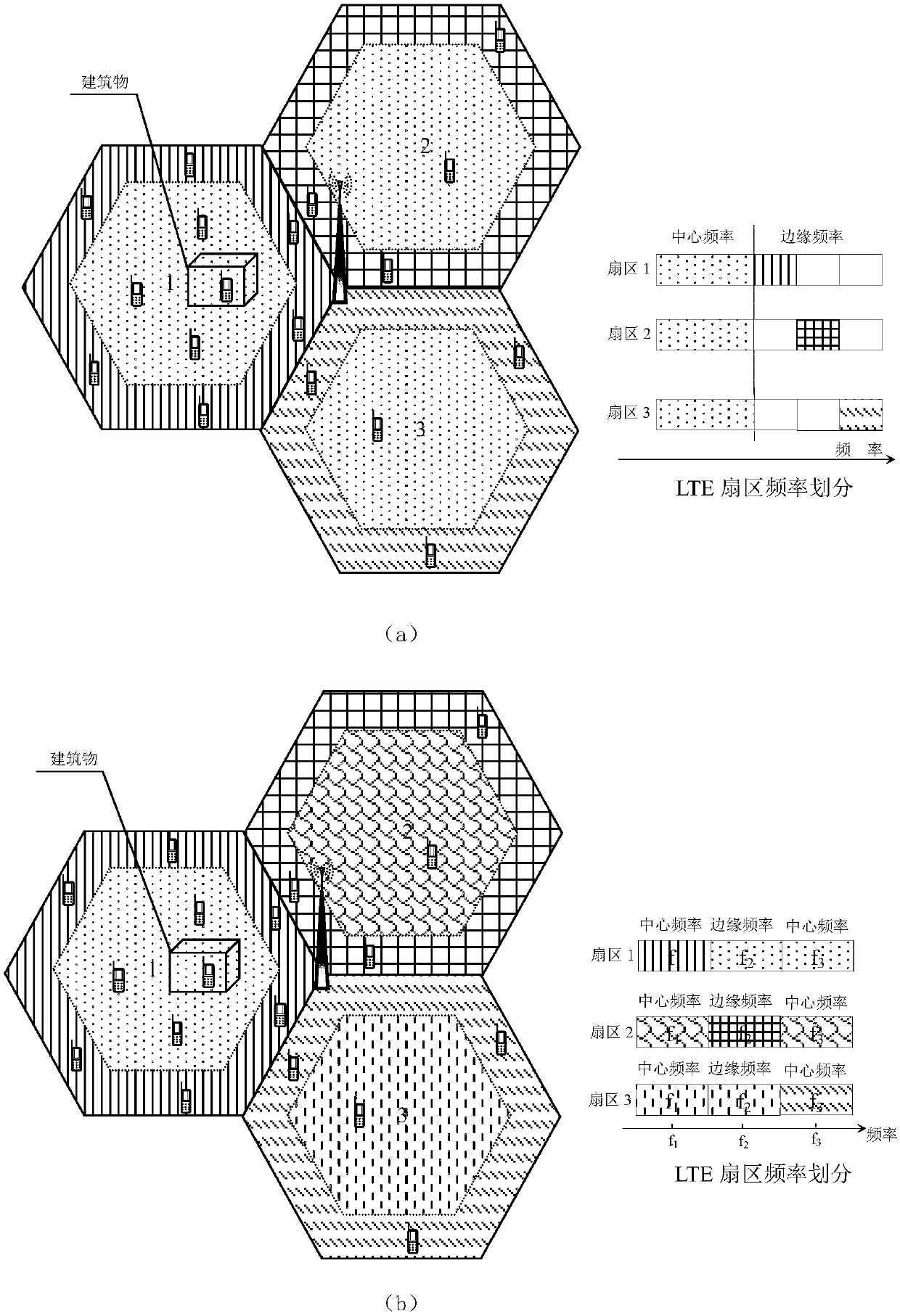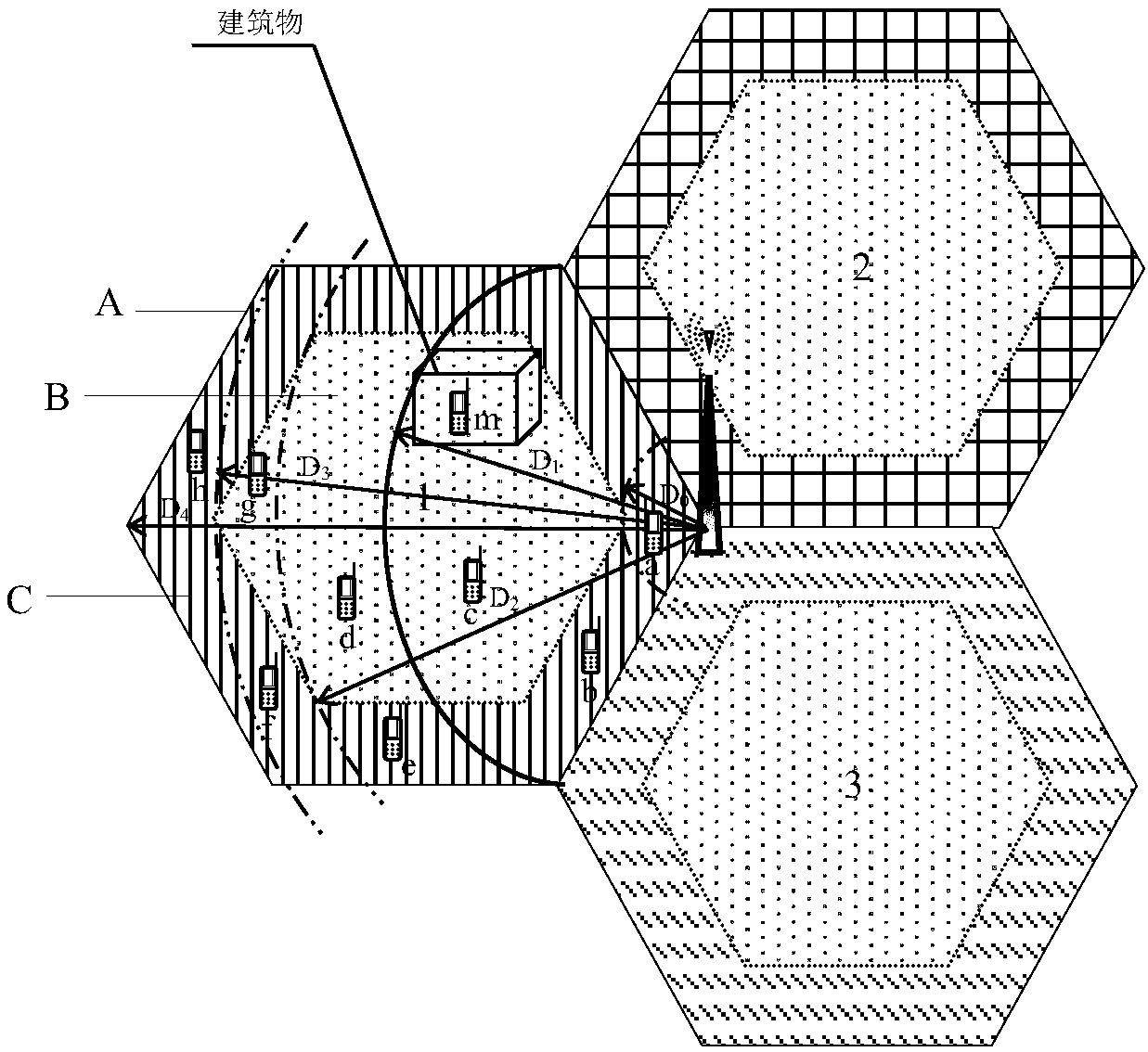Method for dividing edge users and center users in LTE (Long Term Evolution) frequency reuse
A technology for edge users and central users, applied in the field of communication, can solve the problems of inability to divide user types, inability to improve LTE frequency reuse performance, low AOA accuracy, etc., to improve access success rate, improve frequency reuse performance, The effect of improving the division accuracy
- Summary
- Abstract
- Description
- Claims
- Application Information
AI Technical Summary
Problems solved by technology
Method used
Image
Examples
Embodiment Construction
[0049] Below with reference to accompanying drawing, the present invention is described in detail:
[0050] refer to image 3 , the method for dividing edge users and center users in the LTE frequency reuse of the present invention, its specific implementation steps are as follows:
[0051] Step 1, divide the frequency band of LTE sector:
[0052] Through network planning, divide the frequency band of each sector in the LTE system using the same frequency network, and divide it into an edge frequency band and a central frequency band. The edge frequency bands of adjacent cells use different frequency points, thereby improving the frequency bands located in the cell. User UE service performance at the edge.
[0053] Step 2, divide the location area of the LTE sector
[0054] Taking the position of the eNodeB base station to which the sector belongs in the LTE system as the center of the circle, draw arcs with different radii for the area covered by the LTE sector according...
PUM
 Login to View More
Login to View More Abstract
Description
Claims
Application Information
 Login to View More
Login to View More - R&D
- Intellectual Property
- Life Sciences
- Materials
- Tech Scout
- Unparalleled Data Quality
- Higher Quality Content
- 60% Fewer Hallucinations
Browse by: Latest US Patents, China's latest patents, Technical Efficacy Thesaurus, Application Domain, Technology Topic, Popular Technical Reports.
© 2025 PatSnap. All rights reserved.Legal|Privacy policy|Modern Slavery Act Transparency Statement|Sitemap|About US| Contact US: help@patsnap.com



